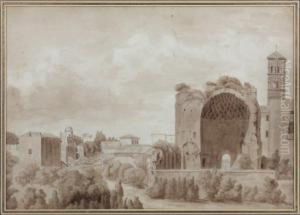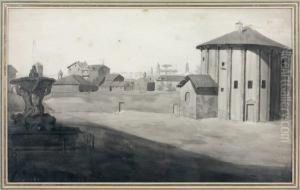Louis Marie Joseph Morel D'Arleux Paintings
Louis Marie Joseph Morel D'Arleux, born in 1755, was a French artist and engraver whose life spanned the late 18th and early 19th centuries, a period marked by significant political, social, and artistic shifts in France. Despite not being as widely recognized as some of his contemporaries, Morel D'Arleux's work provides valuable insights into the artistic and cultural milieu of his time.
Morel D'Arleux's career unfolded during a tumultuous period in French history, which saw the transition from the Ancien Régime through the French Revolution and into the Napoleonic era. This backdrop influenced the themes and styles of many artists of the period, including Morel D'Arleux, although detailed records of his personal views on these events are scarce. His works are characterized by the precision and detail typical of engraving of the period, reflecting the popular tastes and artistic norms of the time.
Despite the scarcity of detailed biographical information about Morel D'Arleux, it is known that he was active in the artistic circles of Paris, contributing to the vibrant cultural life of the city. He was part of a generation of artists who navigated the transition from the rococo style, favored during the reign of Louis XV, to the neoclassicism that emerged in the late 18th century as a reflection of Enlightenment ideals. Morel D'Arleux's engravings, often based on the works of other artists, capture the elegance and detail of this transitional artistic period.
Louis Marie Joseph Morel D'Arleux passed away in 1837, leaving behind a legacy that, while perhaps not as prominent as that of some of his peers, offers a window into the artistic practices and aesthetic considerations of his time. His engravings remain valuable to historians and collectors for their technical skill and as documents of the cultural and artistic history of France during a period of profound change.

